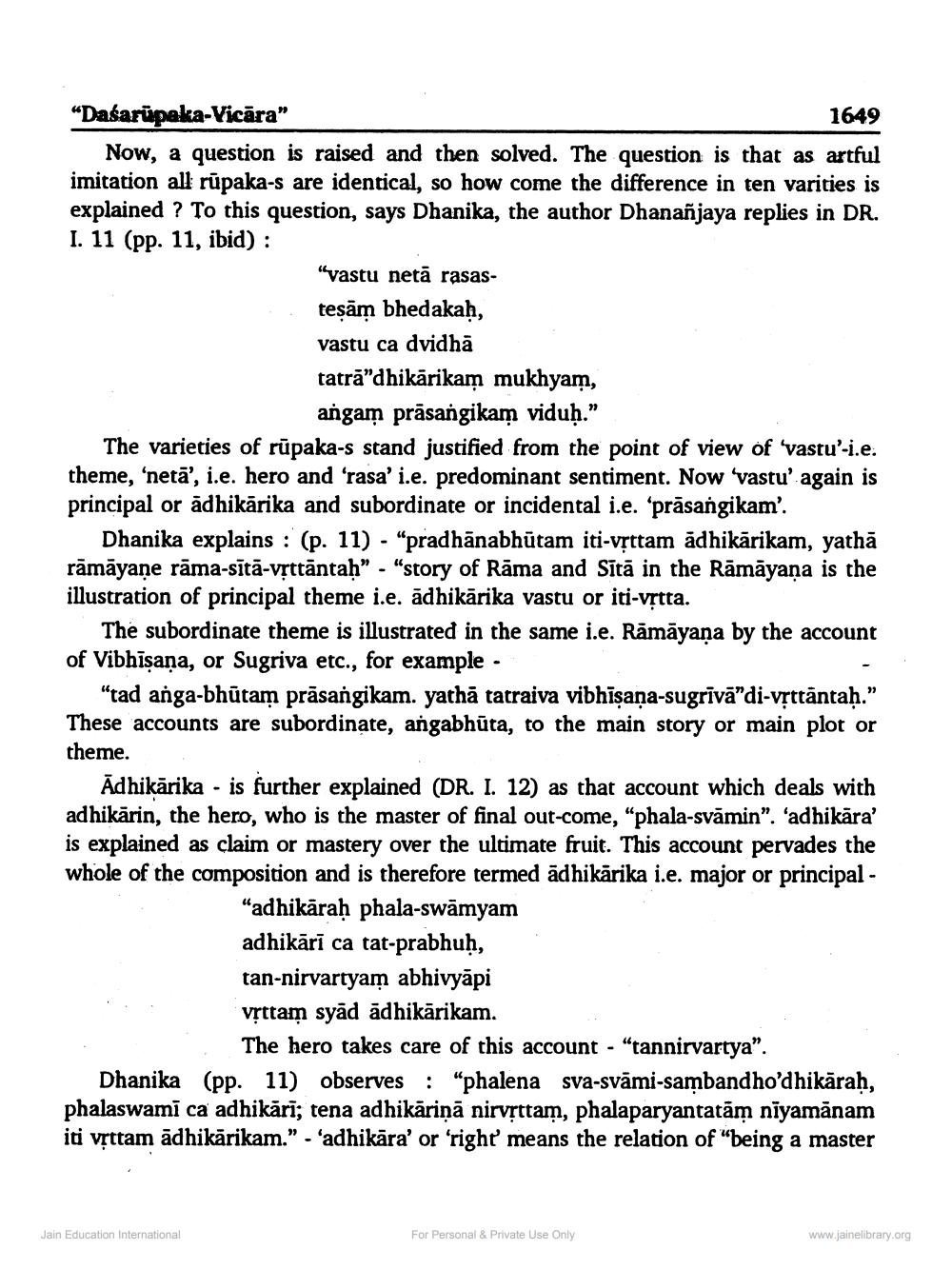________________
"Dasarüpaka-Vicāra"
1649 Now, a question is raised and then solved. The question is that as artful imitation all rūpaka-s are identical, so how come the difference in ten varities is explained ? To this question, says Dhanika, the author Dhananjaya replies in DR. I. 11 (pp. 11, ibid) :
"vastu netā rasasteşām bhedakaḥ, vastu ca dvidha tatrā"dhikārikam mukhyam,
angam prāsangikam viduḥ.” The varieties of rūpaka-s stand justified from the point of view of 'vastu'-i.e. theme, 'netā', i.e. hero and 'rasa' i.e. predominant sentiment. Now 'vastu' again is principal or adhikarika and subordinate or incidental i.e. 'prāsangikam'.
Dhanika explains : (p. 11) - “pradhānabhūtam iti-vșttam adhikārikam, yathā rāmāyaṇe rāma-sītā-vrttāntah" - "story of Rāma and Sītā in the Rāmāyana is the illustration of principal theme i.e. adhikārika vastu or iti-vrtta.
The subordinate theme is illustrated in the same i.e. Rāmāyaṇa by the account of Vibhīsaņa, or Sugriva etc., for example -
"tad anga-bhūtam prāsangikam. yathā tatraiva vibhīşana-sugrīvā”di-víttāntah.” These accounts are subordinate, angabhūta, to the main story or main plot or theme.
Ādhikārika - is further explained (DR. I. 12) as that account which deals with adhikarin, the hero, who is the master of final out-come, "phala-svāmin". 'adhikara' is explained as claim or mastery over the ultimate fruit. This account pervades the whole of the composition and is therefore termed ädhikärika i.e. major or principal -
“adhikāraḥ phala-swāmyam adhikārī ca tat-prabhuḥ, tan-nirvartyam abhivyāpi vșttam syād adhikārikam.
The hero takes care of this account - "tannirvartya”. Dhanika (pp. 11) observes : "phalena sva-svāmi-sambandho'dhikāraḥ, phalaswami ca adhikārī; tena adhikārinā nirvrttam, phalaparyantatām niyamānam iti vrttam adhikarikam." . 'adhikara' or 'right means the relation of "being a master
Jain Education International
For Personal & Private Use Only
www.jainelibrary.org




